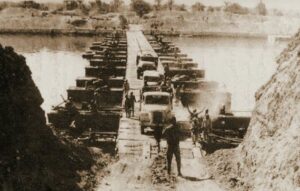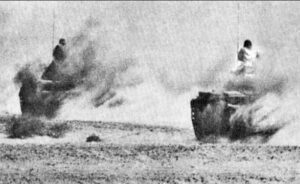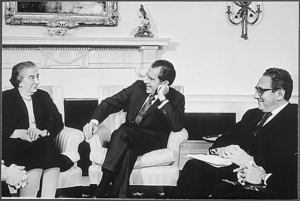
 There has not been a time in my memory that was void of Middle East tensions, and perhaps there never been such a time since Biblical times. There have been many attempts and many negotiations trying to achieve Middle East peace, but none have ever really been successful. There have, however, been many wars, conflicts, and attacks on the countries of the Middle East, especially on Israel.
There has not been a time in my memory that was void of Middle East tensions, and perhaps there never been such a time since Biblical times. There have been many attempts and many negotiations trying to achieve Middle East peace, but none have ever really been successful. There have, however, been many wars, conflicts, and attacks on the countries of the Middle East, especially on Israel.
On October 6, 1973, in a surprise attack by Egyptian and Syrian forces on Israel, again threw the Middle East into turmoil. This particular attack threatened to bring the United States and the Soviet Union into direct conflict for the first time since the Cuban Missile Crisis in 1962. The United States and the Soviet Union had a tense relationship already, and although actual combat did not break out between the two nations, the events surrounding what became known as the Yom Kippur War seriously damaged United States-Soviet relations and all but destroyed then President Richard Nixon’s much publicized policy of détente (an end to hostilities).
Going into the war, Egypt and Syria, who were armed with the latest in Soviet weaponry, appeared to have the upper hand, and it looked like the two-front attack might bring victory to Egypt and Syria, who were looking to avenge themselves after their humiliating defeat in the Six-Day War of 1967. Nevertheless, Israeli counterattacks, aided by massive amounts of US military assistance, as well as disorganization among the Syrian and Egyptian forces turned the tide. The Israeli troops drove the Syrian troops back, and Syrians and seized the strategically important Golan Heights. The Israeli forces were even harder on the Egyptian army, forcing them to retreat back through the Sinai Desert, thousands of their troops were surrounded and cut off by the Israeli army.
As concerns deepened over the possibility of US-Soviet involvement in the conflict, Secretary of State Henry Kissinger, together with his Soviet counterparts, eventually arranged a shaky cease-fire. The Israeli troops had no intention of ending their siege of the Egyptian troops, who by this time were low on food and medicine, the Soviets threatened to take unilateral action to rescue them. This brought the situation close to the boiling point, and with tempers flared both in Washington and Moscow, the US military forces went to a Stage 3 alert. In case you didn’t know it, Stage 1 is war, so the volatile situation was about to explode. The threat of war with the US caused the Soviets to back down on their threat, but the damage to relations between the two nations was serious and would not be resolved for a long time, if ever. I’m still not sure that relationship is on anything but shaky ground.
Nevertheless, Kissinger worked feverishly to bring about a peace settlement between Israel, Syria, and Egypt. In what later became known as “shuttle diplomacy,” the secretary of state flew from nation to nation 
 hammering out the details of the peace accord. Finally, a little more comfortable with things, Israel began to withdraw its troops from some of their positions in both the Sinai and Syrian territory. For their part, Egypt promised to forego the use of force in its dealings with Israel. Syria only grudgingly accepted the peace plan, but they remained adamantly opposed to the existence of the Israeli state…a feeling that still exists among many Middle Eastern nations to this day.
hammering out the details of the peace accord. Finally, a little more comfortable with things, Israel began to withdraw its troops from some of their positions in both the Sinai and Syrian territory. For their part, Egypt promised to forego the use of force in its dealings with Israel. Syria only grudgingly accepted the peace plan, but they remained adamantly opposed to the existence of the Israeli state…a feeling that still exists among many Middle Eastern nations to this day.


Leave a Reply